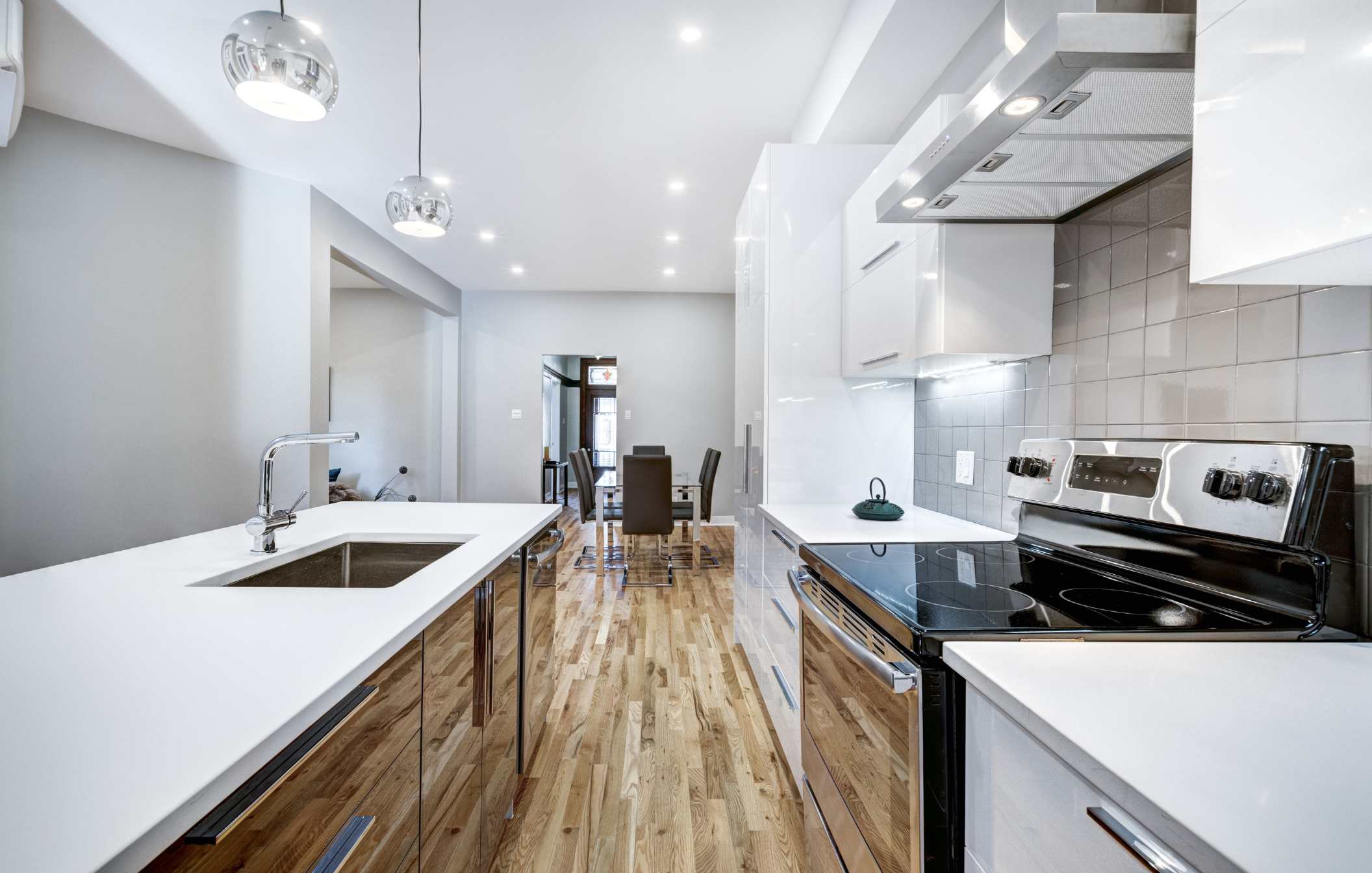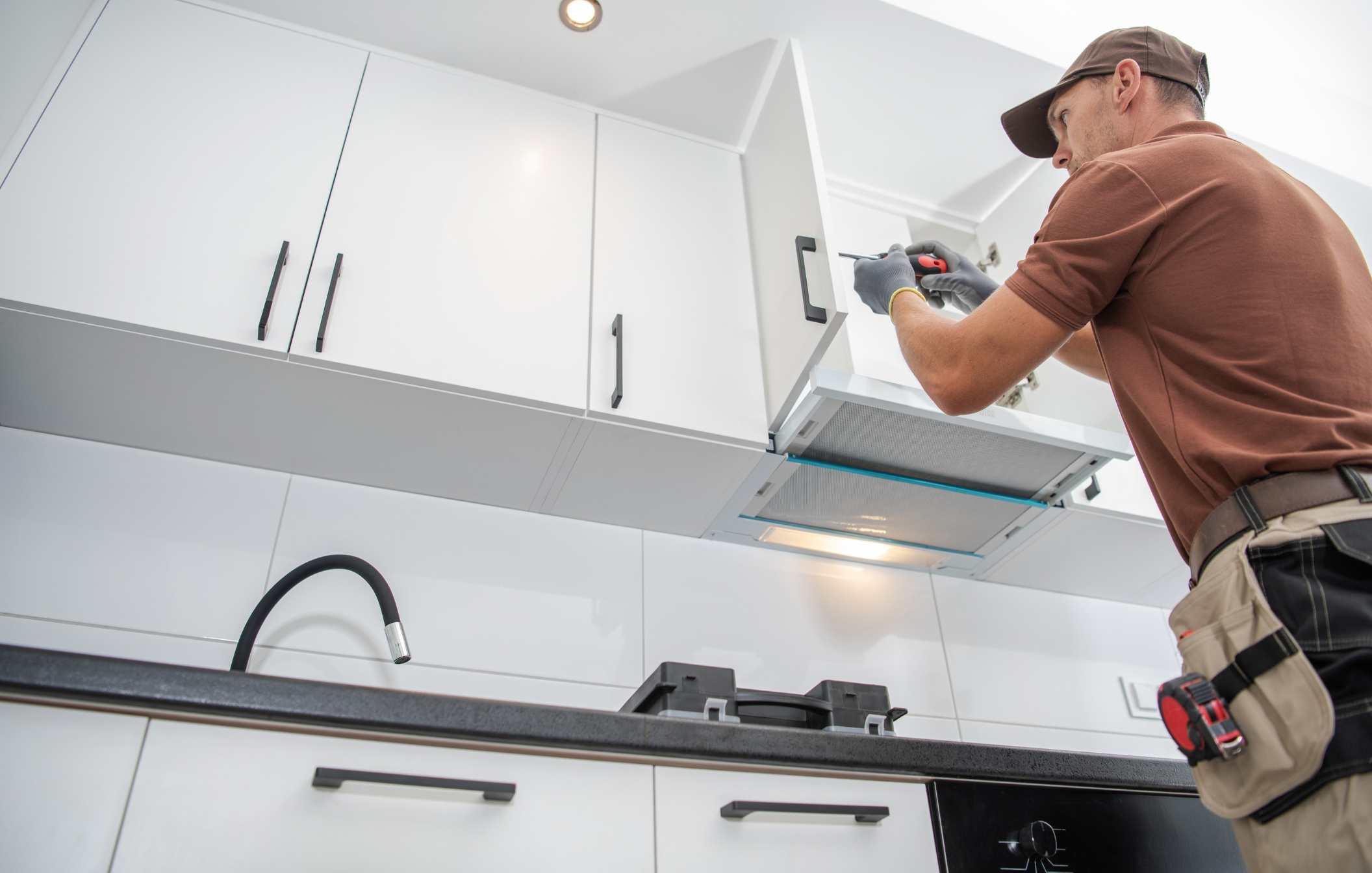A kitchen renovation is a major project that requires careful planning, especially when deciding the order of installation for the flooring and cabinets. Each option—installing the flooring first or installing the cabinets first—has its own advantages and drawbacks.
Your choice will ultimately depend on several factors, such as the materials you’re using, your budget, your kitchen design, and how you plan to maintain or remodel it in the future.
Let’s get straight to the point.
When renovating a kitchen, deciding whether to install flooring or cabinets first depends on cost, materials, and future maintenance. Installing flooring first offers a seamless look and easier future renovations but may need more materials and cause issues with wood flooring.
Installing cabinets first saves flooring costs and protects floors during installation, but it can make future flooring updates and appliance replacements more difficult. Most renovations install cabinets first to reduce waste and avoid height issues with thicker flooring.
However, flooring may need to go first in cases where height adjustments are required for appliances, or an even floor is necessary.
Pros And Cons Of Installing Flooring First
Pros Of Installing Flooring First
One of the primary reasons people choose to install the flooring first is to avoid the challenge of cutting around cabinets and appliances. This can be a time-consuming task that, if not done perfectly, may lead to a less-than-ideal finish.
Installing the flooring before the cabinets can provide a more seamless look to your kitchen and make future renovations easier.
- No Complicated Cuts: By installing the flooring first, you eliminate the need to make intricate cuts around the bases of the cabinets and appliances. This makes the installation process easier and results in a smoother, more professional appearance.
- Easier Future Renovations: If you ever decide to remodel your kitchen again, installing the flooring first can save you a lot of hassle. With the flooring already in place under the cabinets, you can replace the cabinets without worrying about damaging or mismatching the floor.
- Cleaner Aesthetic: Installing the flooring first ensures a uniform and polished look. There’s no need to use quarter-round moulding or other trim pieces to cover up any gaps between the flooring and the cabinets, which can sometimes detract from the kitchen’s overall appearance.

Cons Of Installing Flooring First
While there are clear benefits to installing flooring before the cabinets, it’s not without its downsides. One of the biggest disadvantages is the risk of wasting expensive flooring materials hidden under the cabinets and appliances.
- Wasted Materials: Installing flooring underneath the cabinets and appliances leads to using more materials than necessary, which can be costly—especially if you’re using high-end materials such as hardwood. This results in paying for flooring that will never be seen.
- Costly Future Floor Replacements: If you need to replace your flooring in the future, you’ll face the challenge of removing the cabinets to get to the flooring underneath. This will increase the cost and extend the time required for future renovations.
- Wood Flooring Concerns: Wood flooring, in particular, poses challenges when installed under cabinets. Wood flooring expands and contracts depending on changes in temperature and humidity. If you place cabinets on top of the flooring, the weight may restrict this natural movement, leading to the floor buckling or becoming damaged over time. Floating floors, designed to expand and contract, should never be installed under cabinets, as the added weight can cause them to warp or crack.
Pros And Cons Of Installing Cabinets First
Pros Of Installing Cabinets First
Many homeowners and contractors prefer to install the cabinets first, as this approach has several advantages, especially in terms of cost and ease of installation.
- Saves on Flooring Costs: Installing the cabinets first will save money on flooring since you won’t need to cover areas that will never be seen. The flooring is only laid where visible, reducing material waste and overall expenses.
- Less Risk of Floor Damage: If you choose to install the cabinets first, you won’t need to worry about damaging your new floors during installation. Installing cabinets can be tough on floors, especially if heavy objects are moving around or tools are dropped. Having the cabinets in place first ensures your flooring remains in perfect condition.

Cons Of Installing Cabinets First
Installing cabinets before the flooring has a few downsides. While this approach can save on costs and reduce the risk of flood damage, it can also make the flooring installation more challenging and may lead to complications with future appliance replacements.
- More Challenging Flooring Installation: When the cabinets are already in place, it becomes necessary to cut the flooring to fit around the base of the cabinets. This process can be tedious, especially with more complex flooring materials like tile or hardwood, and may lead to visible gaps or imperfections.
- Appliance Issues: Installing the cabinets first can make replacing appliances more difficult. Built-in appliances, such as dishwashers or ovens, can become trapped by the surrounding flooring, making it hard to remove or replace them without damaging the floor or cabinets. This can be particularly frustrating if your appliances need repair or replacement in the future.
Why Cabinets Typically Come First
In most kitchen renovations, installing the cabinets before the flooring is standard practice. This method helps account for the various heights and thicknesses of different flooring materials, ensuring that the overall layout and functionality of the kitchen remain optimal.
Less Flooring Is Required
Installing the cabinets first saves money by reducing the amount of flooring you need to purchase. There’s no reason to pay for expensive materials to cover areas hidden under your cabinets and appliances.
For example, high-end hardwood flooring is costly, and laying it under the cabinets could result in unnecessary expenditure. By saving on this material, you can focus on using it only in the areas that will be visible and appreciated.
Avoid Flooring Height Issues
Different flooring materials come in varying thicknesses, which can sometimes interfere with the height of the countertops and cabinets. The standard countertop height is between 34 and 36 inches, but thicker flooring, such as solid hardwood, can push the countertops above this standard height, potentially causing issues with the kitchen layout.
- Engineered Wood as an Alternative: If you’re set on using wood flooring but are concerned about the thickness of solid hardwood, consider using engineered wood instead. Engineered wood is typically thinner than solid hardwood, consisting of a layer of wood veneer on top of a plywood base. This can help maintain the correct countertop height while giving you the look and feel of wood flooring.
- Skipping the Underlayment: Another option for reducing the overall height of the flooring is to install the finish flooring directly onto the subfloor without using additional underlayment. Underlayment can add a quarter to half an inch of height, pushing your counters above the standard height. Eliminating the underlayment can help avoid this issue while providing a stable surface for your finished flooring.
When You Should Install Flooring Before Cabinets
Installing the flooring before the cabinets is sometimes necessary or recommended. This typically happens when the total height of the flooring needs to be raised for reasons such as appliance height or a construction issue.
Here’s when you should consider installing flooring first:
- Height Requirements: If you’re using a thick flooring material or if the overall height of the kitchen floor needs to be higher than normal, it may be best to install the flooring first. This ensures that the cabinets and appliances sit at the correct height, maintaining a cohesive and functional layout for your kitchen.
- Level Flooring Under Appliances: Installing the flooring first ensures that the entire kitchen, including the area under appliances, is on the same level. This can prevent future issues with uneven floors that may arise if you install the cabinets first and then try to work the flooring around them.
Conclusion
Whether you choose to install flooring or cabinets first during your kitchen renovation depends on several factors, including cost, material type, and long-term maintenance considerations. Installing flooring first offers a seamless aesthetic and easier future remodelling, but it may lead to unnecessary material waste and potential issues with wood flooring expansion.
On the other hand, installing cabinets first saves flooring costs and minimizes floor damage during installation, though it can complicate appliance placement and future flooring repairs. Ultimately, the decision comes down to your needs, design preferences, and renovation goals.
FAQs
Is It Worth It To Renovate A Kitchen?
An average kitchen remodel will pay off more than a high-end renovation. According to Remodeling magazine’s Cost Vs. Value Report, a major kitchen remodel costs $68,490 and homeowners recoup $40,127, which is 58.6 percent. An upscale kitchen remodel costs $135,547, with a 53.9 percent ROI.
Why Are Kitchen Renovations So Expensive?
Kitchens and baths are by far the most expensive rooms in the house because they are not only finish- and material-intensive (full of countertops, tile, and cabinets), but also carry additional budgetary demands due to plumbing, electric, and mechanical requirements.
What Is Included In A Full Kitchen Remodel?
Kitchen Remodel Components
- Cabinets. Cabinets.
- Appliances.
- Countertops, Sink and Backsplash.
- Lighting and Electrical.
- Flooring.
- Plumbing.
- Painting.
- Demolition and Removal.
How Much Does A Kitchen Island Cost?
However, the average cost of a kitchen island usually ranges from $3000 to $5000. If you’re ready to go for the relatively less expensive models, your budget can run as little as $100. On the other hand, a customized remodel for your kitchen island can add $10,000 to your kitchen remodel costs.
What Is Waterfall Kitchen Island?
When selecting your countertop for your kitchen island, you can choose the standard design or a waterfall design. The standard design is a single horizontal surface that ends at the edge of the island whereas a waterfall design drops vertically down the sides which creates a continuous flow to the floor.

